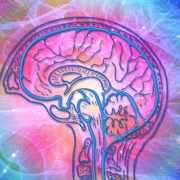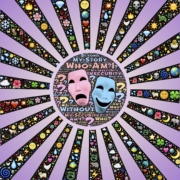A new creative you takes the lead when you surrender to your unexplained sensitivity
The personal challenge
What if a google map of your town, instead of showing the restaurants where you might enjoy dinners, could show the companies and communities where you would enjoy the pursuit of possible interests. To bring into existence such a map, you would need to describe the intellectual, artistic, entrepreneurial, activist or spiritual interests.
You know what excites you based on the experiences you have had so far. What if your life experiences, as you know them, have been in environments where your innate interests were not supported? Until one day, thanks to a lucky circumstance, you read one sentence or listen to someone’s story and you think, “That’s me.”
Out of all the interests you thought you have, the newly awakened interest rearranges your internal awareness and motivates you to move away from a conforming and insecure person towards a creative, passionate and authentic individual.
Suggested solution
Establishing a new kind of trust is the desired outcome when the internal psychic landscape is negotiated between the old and new you.
The discovery of a new interest brings up the possibility of taking the role of a creator
The teacher who teaches a new grammar rule, by playing a ball game with the pupils. The parents who want their kids to have a manual to use during the class.
Millennials who buy online what they need, from groceries to a new home. Baby boomers who prefer physical visits to the store, touch the product and look into the sellers’ eyes.
The world has always been in hegemony between the old way and new way of doing things. Moreover, these kinds of conflicts are internalised within each one of us.
One day, you listen to someone’s story or you read a book when you get excited, “My goodness, this is my thing! This is what I’d like to do.” A sentence that someone wrote opens your mind to a new world of possibilities.
Composing music is my thing.
Surreal fine art photography is my thing.
Designing new vaccines is my thing.
Leadership communication is my thing.
Virtual team management is my thing.
What is your thing?
Discovering a new interest is a life-changing moment. Your heart tingles to understand more about the respective topic, i.e., intellectual, artistic, entrepreneurial, activist, spiritual.
Your mind is flooded with What if scenarios. “What will be the outlets where I could practice my interest? I’ll host a podcast show. I’ll have a YouTube channel. I’ll write a blog. I’ll start a Greta Thunberg kind of movement.”
Regularly, you start to create something around this interest but then the pull between the current you and the possible you kicks in. And the inner tension is increasingly nagging and consumes more of your mental energy.
On one hand, there is comfort in the certainty of doing things and meeting the people you know. The past you is the one you are familiar with. The version of you who feels in control over the competencies, skills and relationships related to the professional experiences you’ve had so far.
On the other hand, you may start to believe there’s some potential in you triggered by a particular curiosity. The newly discovered interest is enriching you but pushing you into an unknown territory where you’ll need new skills and relationships.
Who is going to win the inner conflict between the one you used to be and the one you could be?
It depends on whom you decide to trust more in the present. The sense of familiarity of previous experiences. Or the intuitive sense that gently informs you of the new interest where your potential lies. Should you trust the latter, you’d then need to be willing to take the active role as a creator. You’d need to explore what you are naturally drawn to create.
You become active creator when you trust the unusual attraction towards something
Whatever the domain where you’d like to bring your contribution, it will not be enough that you acquire all the relevant information and you know what to do with it. You have to be interested in the state-of-the-art in the respective domain. But not the regular information that a person must have to adapt to the environment in a particular situation, as in, “I like to take nature photos to calm myself down.”.
To increase the likelihood of turning the newly discovered interest into a significant work, understood by some people, you need a highly acute interest, which psychologist M. Csikszentmihalyi calls it psychic energy, to a particular aspect of the domain. “I’m interested in the use of photography techniques to express meaningful stories. My photography will thus help other people calm down.”
Therefore, in the present, you’ll need to give in to your sensitivity, your disposition to perceive certain subtleties related to a specific topic in a domain. It would be fascinating to inquire into the origins of highly acute interests. However, for the purpose of this article, it is more useful to investigate what you can do about a newly discovered interest. For example, the Dutch graphic artist Maurits Cornelis Escher is known for his love for the “game” of dividing a plane into small recognisable figures that repeat themselves on end. How did he come to embrace this love?
“My first intuitive step in that direction had already been taken as a student at the School for Architecture and Decorative Arts in Haarlem. This was before I got to know the Moorish majolica mosaics in the Alhambra, which made a profound impression on me.” wrote Escher in the art magazine De Delver, The Digger.
Unconscious choices are the first part of discovery of acute interests. For Escher, this part ended in 1936 when he took his second trip to Spain, when the decorative Moorish art in the Alhambra fortress intrigued him more.
The second part of the development of an acute interest starts when you are conscious about what you need to do to develop the affinity towards something. Then you take up new learning. When Escher returned from the second trip to Alhambra, he learned from the mathematicians community that the regular division of planes in congruent figures is part of the study of geometric crystallography. Therefore, he got interested in reading articles on this subject. In the end he “dared, that is, to work on the problem of expressing unboundedness in an enclosed plane that is bound by specific dimensions”.
To turn a new interest in a love for creation takes years and unflinching commitment to learning and developing yourself.
The acceptance of your natural sensitivity provides the inner drive to put in the required effort so that the newly acquired interest transforms into an acute interest that results in useful creations.
“It (to draw) is really strictly a matter of persisting tenaciously with continuous and, if possible, pitiless self-criticism. Talent and all that are really for the most part just baloney.” wrote Escher to his son Arthur, on November 2nd, 1955. “Any schoolboy with a little aptitude can perhaps draw better than I; but what he lacks in most cases is that tenacious desire to make it a reality, that obstinate gnashing of teeth and saying, ‘Although I know it can’t be done, I want to do it anyway.’”
Finally, the new you wins over the old you when you learn to trust in your sensitivity towards certain subtleties in or outside yourself, despite the self-criticism. And you’d then need to recognize what is that you will have to do differently in order to grab opportunities to create.
“I cannot help it! This topic is my thing.” This surrender to your extraordinary sensitivity will change the way you perceive the people and resources in your surroundings and the person you become. Engaging in acts of creation is your new and most important life aspiration.
What if your google map of acute interests required an update with a new community in town where you’d show the outcomes of your first act of creation? What would that place be?




